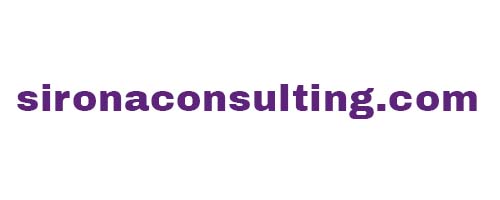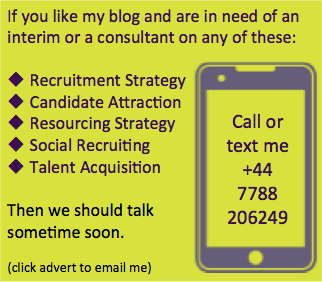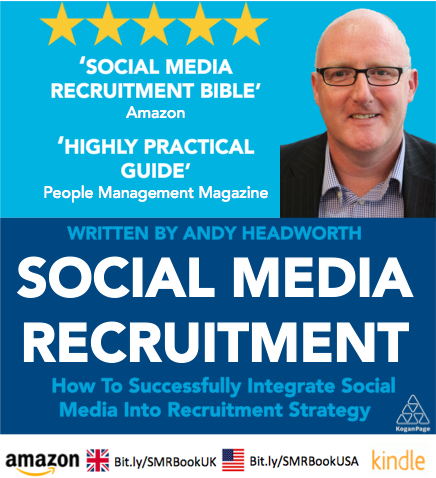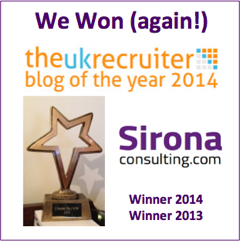Why Facebook Should Be Part Of Your 2016 Resourcing Strategy
If you believe just half of the predictions for 2016 then you know that resourcing talent is going to be one of the biggest challenges - in nearly every single sector. An even bigger challenge, though, is to try and get companies to start doing different things to source and engage talent. Every recruiter in every company and recruitment agency is on LinkedIn; most hiring managers and senior executives in companies are on LinkedIn (albeit with a need for improvement), and of course many of them are going after similar people with similar skills, so why not look at using other sources.
Let me be clear, I have no question with LinkedIn being the default recruitment tool, but it’s universal accessibility has dramatically levelled the playing field. Of course training is needed on LinkedIn to search properly, but when trained it is straightforward to map competitors, search for specific skills and message people. LinkedIn is even making this easier with their artificially intelligent search engine and new Recruiter product enhancements coming out soon. HR, resourcing, recruiting and talent leaders need to really consider other additional options to find and attract the talent they need.
LinkedIn is great for resourcing talent but then again so are many other platforms (depending on what you are recruiting of course).
If you want to look at a wide range of social media sourcing options, here is a webinar I did recently and subsequently recorded that will give you some ideas:
The biggest social network, Facebook, is strangely still one of the least used social sites for recruiting. Yet it is has the most engaged audience of all networks which means that there is a better chance of data being current and up to date. Take a look at these recent statistics from Statista showing the different engagement levels:
Look where LinkedIn is when compared to Facebook (and a number of other social platforms for that matter!) - as a recruitment tool, it cannot be ignored any longer.
I appreciate that for many people Facebook represents family and friends and importantly, privacy, so there is some trust issues to overcome here. There are still a good number of companies that actually ban Facebook in the workplace! But changes are happening fast - before you know it RBS’s use of the new Facebook At Work (yes a bank is using Facebook internally!)will be being widely used as an internal communications tool.
So, why should Facebook be part of your 2016 resourcing strategy?
Facebook has huge amounts of user data, from the personal data people provide when they first join Facebook, to the friends they have, the pages they like, the content they post, the content they like and so on. This is a recruiters goldmine as Facebook makes all of this data available for search with their Facebook Graph Search tool.
Facebook Graph Search allows you to use a wide variety of criteria within a single search. You can search for user names, companies, education, universities, schools, gender, pages liked, job titles, locations, spoken languages, friends of a user and group members.
Unfortunately, Facebook doesn’t use Boolean search within their search function. They use a semantic search called Facebook Natural Language search, which allows for a multi-faceted search. However, people often find this type of search functionality both confusing and difficult to understand. Because of this many people give up searching Facebook because they don’t get the results they want from it.
So, as a recruiter, if you use Facebook Graph Search, you have the opportunity to gain a competitive advantage and find new talent that your competitors haven’t.
Fortunately, there’s a new tool that makes it easy to build complex Facebook Graph Search strings and get the results you‘re looking for. It’s a Google Chrome extension built by Shane McCusker called Facebook Search, and it will genuinely revolutionise your Facebook Graph Search experience from here on out. Simply go to the link and add the extension to Chrome, and then you are good to start searching.
For this tool to work, you need to select English (US) as your primary language for Facebook. To do this, go to your user settings, select Language on the left and change the language that you want use for Facebook.
After you add the browser extension to Chrome, you’ll see an icon on your browser bar. Click it and a simple Find People on Facebook Who search box appears. The Facebook Search extension offers a simple search form that’s easy to use. Click the drop-down menu to see the level of detail you can use in your Facebook search.
You can choose from a number of parameters show above to create your search.
With this tool, build your search string the same way you would with a Boolean style. To start, enter your first search parameter and click the And button. Another line then appears where you can add another parameter to the search string. Repeat this process until you‘ve entered all of the parameters that describe your prospects.
For example a client I was working with recently were looking for HR Managers that speak arabic and live in London - a difficult search on LinkedIn I am sure you would agree - so this is how easy it is using this simple tool:
Add the fields :
The click the blue ‘Search Facebook’ button:
The images and names have been taken out for obvious reasons, but you can see here how quick and easy the results are. There is an added bonus on this tool and that is the ability to download all the results into a csv file. Click back on the tool in your browser, and you will see a green box, click that and it will download all the information you have in your search results.
Try it for yourself and you will definitely find that you have just opened up a completely new pool of talent you never knew existed!
How to make contact people on Facebook
This is the bit that people have a problem with. There are several ways to contact people you find on a Facebook Graph Search:
- Check their details on another social network you use like LinkedIn, Twitter Google+ etc and contact them there (you may feel more comfortable this way)
- Use the @Facebook.com email address you are able to download in the tool above. It doesn’t work every time but if you send an email via GMail it will get to the recipient more often than not, as Facebook now auto-forward all of their emails to the account holders primary email addresses.
- Use the new Facebook messages facility show below.
Messages from people you don’t know will show up in your Messenger inbox as a Message Request. The recipient can then read this message without alerting the sender and decide whether to ignore or accept it.
Messaging people on Facebook is TOTALLY DIFFERENT to LinkedIn, on the basis that many people will just be expecting recruiters to be messaging them via their ‘perceived’ private social network. Make the messages personal to them, don’t jump by sending them job specs or ‘are you available’ emails, and importantly don’t spam them. You will likely only get one chance to make a favourable impression.
I work with companies large and small with their resourcing strategies, helping them integrate social media into their recruitment processes. It may surprise you to know that every single company is different in the way they work, the people that do the recruiting and the objectives of the organisations. The social networks they use and the resourcing methods employed are also very different, which is why my post headline says ‘part of 2016 resourcing strategy’, as a variety of approaches should be used in any resourcing strategy. Facebook is a great tool, but one of many that can be successfully used for recruitment.
If you want to discuss areas of this post, check out a short video of what we do or need help with regards to improving your resourcing strategy or recruitment process, just send me an email and let’s have a chat.
And remember, if you like this post, don’t forget to subscribe to Sirona Says blog to ensure you don’t miss the weekly posts. And if you haven’t got your copy yet, don’t forget to buy a copy of my new book.











